Russia has been waging war in Ukraine since 2014. Capturing the reality of this tragedy cannot be done exclusively through television news; it is also a work of documentary filmmaker, with different views on the daily life of a war that does not take place only in the front line. Deciphering YOU DESTROY. WE CREATE. : a VR film made and distributed in the temporality of the drama, with their directors Felix Gaedtke and Gayatri Parameswaran.
NowHere Media is a Berlin-based studio that creates virtual and augmented reality experiences focused on human rights, conflict, social justice, and climate crisis issues. Founders Felix Gaedtke and Gayatri Parameswaran carefully craft each project with powerful storytelling, from their background in journalism and immersive design.
YOU DESTROY. WE CREATE. or to capture the moment
Felix Gaedtke – When we started the production, with the help of Meta, the plan was clearly to witness very quickly what is happening today in Ukraine. Initially we considered a 6DOF installation on this subject, but it would have taken too long… In the end, we shot in August 2022, and the film has been available since the end of November on the Meta / Oculus TV platform.
Gayatri Parameswaran – We remain journalists by nature, and YOU DESTROY. WE CREATE. is a documentary project where we went back to the essence of our work, in a particular context, with criteria related to the urgency of the situation and the duty to testify. We had to maintain the quality of our work while ensuring a fast-paced production. Fortunately, we were able to benefit from a lot of support, from the Meta (VR for Good and Innovative Media team) to our own production people in Europe – and we would like to thank the Ukrainians in particular for their help!
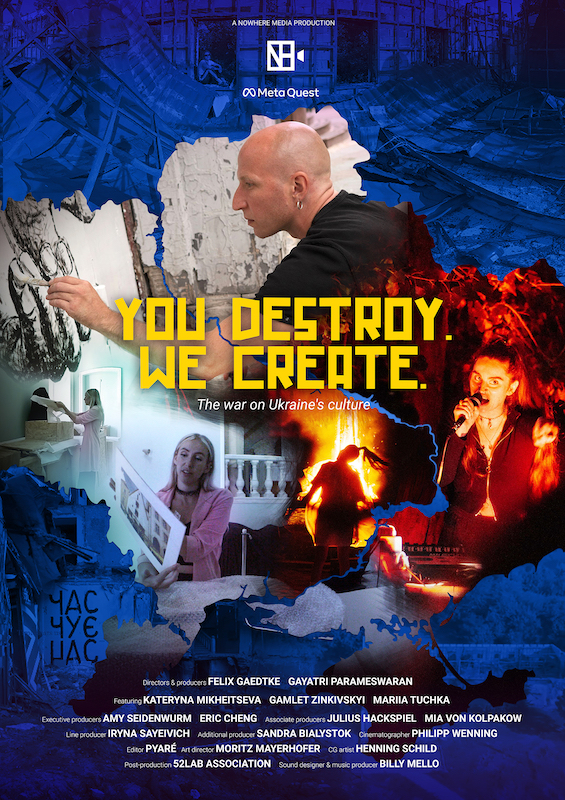
F. G. – Before the conflict started again in February 2022, we already had a network of contacts in Ukraine, including artists. When we decided to launch the production of YOU DESTROY. WE CREATE. we established with them a list of potential subjects, ideas. It was very spontaneous, and at the same time we had to look at the different artistic disciplines, to put forward some traditional Ukrainian practices. And always keep the criteria of security and logistics in mind. There were a lot of people we could not meet unfortunately… On the other hand there were new encounters, like this street artist that we followed in Kharkiv. He continues his art in spite of the context, and that encourages everyone!
G. P. – Choosing VR as a medium of expression, on this project, is an ambition to present the reality on the field to the general public. You can’t replace the efficiency of a 360 film on this point… And if we had to make concessions on the artistic side of the film, it’s not at the expense of our skills or the material used; we went back to a 360 film that we could produce quickly, and while keeping high quality to the image. We discussed this a lot with Amy Seidenwurm (Meta), to whom we had initially presented a much more ambitious installation – along the lines of KUSUNDA, our previous project.
F. G. – The topic guides the format we have chosen. If we consider that culture is not necessarily the priority to deal with the Ukrainian conflict, it is a mistake. Culture is closely linked to the identity of people. It is at the center of this war initiated by Russia, it must be explained.

Ukraine 2022: Making a Film during Wartime
G. P. – We were able to meet other journalists who were covering the conflict. But our approach is detached from the news cycle, and remains closer to documentary. Shooting in 360 allows us to be more present at the key moment, but also to explore more space. Unlike traditional media, we did not have the ambition to go and film on the front line. We wanted to detach ourselves from the violence and warlike aspect to highlight the Ukrainians and their culture. VR is not a medium where we have to place the viewer in a too brutal, violent context. We had to guide him to witnessthe daily life of the artists – without diminishing the effects of the war of course. There is no need to show the “gory” aspects to have an impact.
F. G. – On this project we travelled 4000 kilometres across the country, from Odesa to Kyiv, Kharkiv etc. And never in a straight line! In truth, we had to be very flexible about the shooting arrangements in order to meet the artists at the right time, to revise our plans at the last minute… There is a truth behind this, that of the war. Things change quickly. We couldn’t do exactly what we wanted to do (including flying our drone in certain cities) for security reasons. And we had the unfailing support of our contacts on the spot, who helped us to enter the country, to move around. The Ukrainians are particularly courageous, and want to show as much as possible the atrocity of this conflict – including on the cultural level. Because it is a cultural war, basically.
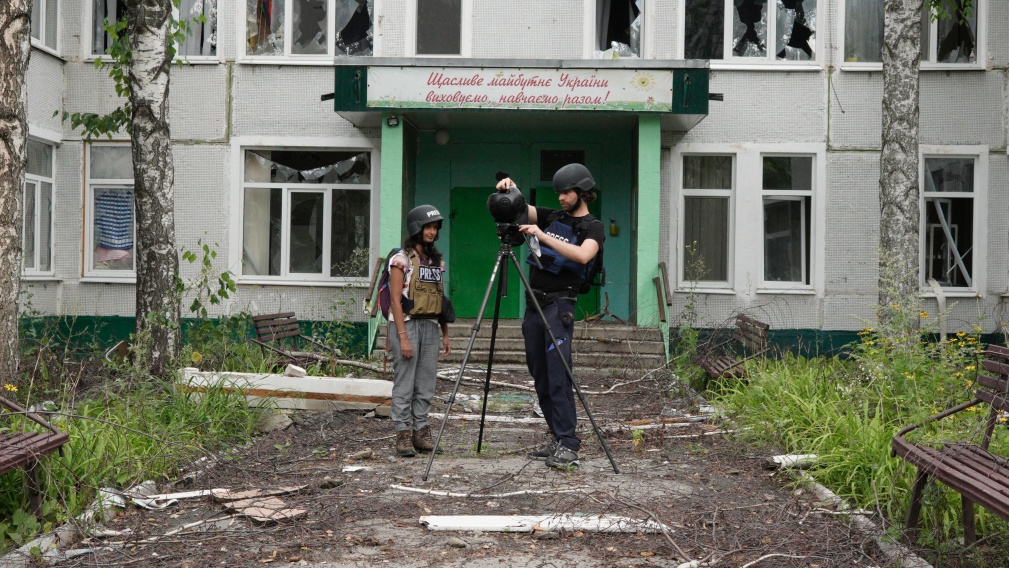

G. P. – One of our biggest challenges was the technical side. And navigating between missile alerts, sheltering, power outages (which were infrequent at the time of shooting, but we had to anticipate them). In some cities, there were 10 to 20 alerts per day; we had to run to the shelters and wait. Risk management was vital to YOU DESTROY. WE CREATE. We sometimes had the military escorting us, plus a warning system with our team in Germany. In the end, we were able to return from the trip without having any major mishaps.
F. G. – Inside the shelters, we chose to realize the plans in animation, and this for several reasons. First of all, it was often complicated to go down with all the equipment because of the urgency of each alert. Moreover, it seemed irrelevant, and often awkward, to film these situations where everyone is very vulnerable and filmed during the alert. The shots in the film are very realistic, taken from what we experienced.
Gearing up for a VR documentary shooting
G. P. – We were three people who arrived in Ukraine – Felix, me and our cinematographer Philipp Wenning (who had worked with us on KUSUNDA among others). On location in Ukraine, we had a line producer and 1-2 assistants to help us. We had a 360 camera, the Insta360 Titan, but also a Canon EOS R5 C (DSLR) with a VR lens: RF 5.2mm F2.8L Dual Fisheye. Not to mention the DJI Mavic 3 Pro Cine drone, audio equipment, stands, a gimbal… We had also built a suitcase specifically designed to charge all this equipment, in case of power failure. We also had to anticipate the backup of the data, with a suitcase that allowed us to carry out data transfers while on the move.
G. P. – When we had time to install the Titan, that was our priority. But on many occasions we needed to go faster and turn quickly. Or if we had to move forward, move, we’d go for the Canon. Philipp also filmed handheld with the Canon a lot. Shooting on the move was a real freedom, in a way, considering the context. Today it would be much more complex to make this film, while with the winter and the Russian attacks, Ukraine is experiencing many more power cuts.
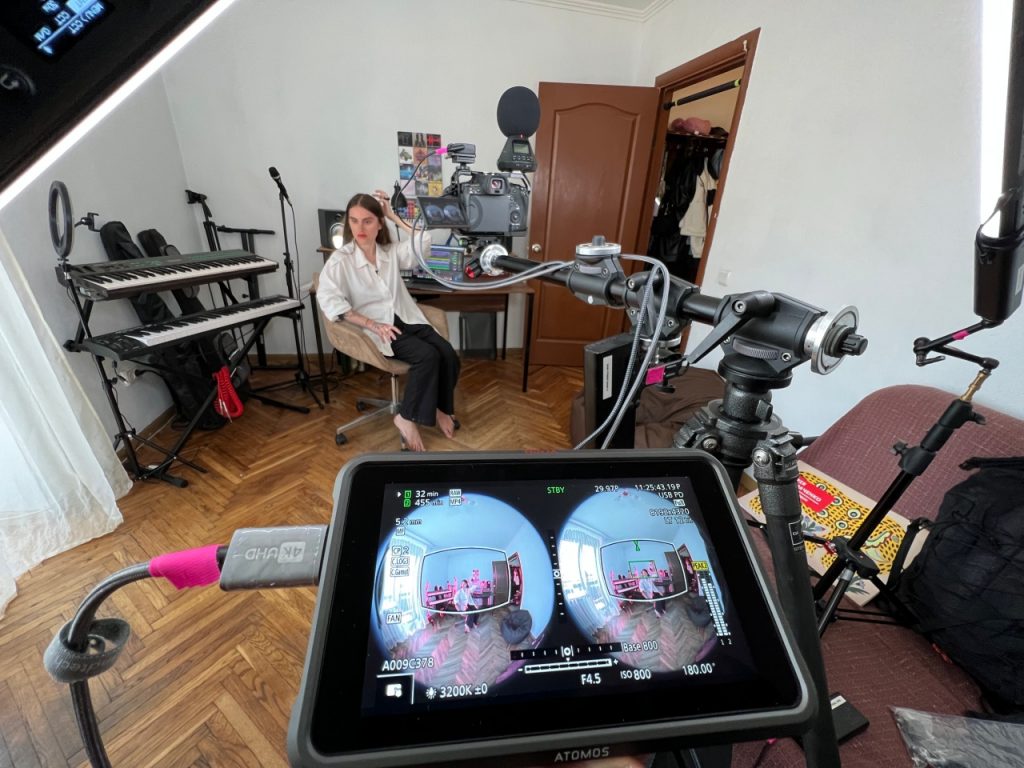
F. G. – In reality, the project includes 360° shots, 180° shots , drone shots, animation… It is a complete range of what can be done today in VR film, trying to create depth in each shot. We did all of the sequences in stereo to ensure a real immersive realisation.
G. P. – Bringing a drone was a real added value for us, even if it was complex. There is a stereoscopic effect on the drone shots that we create by placing the lateral drone shots on top of each other on the timeline for stereo effect! We were inspired on this point by the work of our friend Azad Balabanian (realities.io), who was experimenting with VR image capture with drones. He is the one who encouraged us to use this mode of shooting for a project with more storytelling. We then had to contact each press officer in the shooting areas, and get permits to fly it.
On the distribution of YOU DESTROY. WE CREATE.
F. G. – We would like to present YOU DESTROY. WE CREATE. in Ukraine. But we have to organise ourselves according to the reality of the conflict, and find the right time for that. We hope that a screening will take place soon. Beyond putting the film online, we will solicit the classic circuit of immersive creation, with festivals or physical places to present it to the public as widely as possible. Starting in January with the World Economic Forum in Davos (Switzerland).
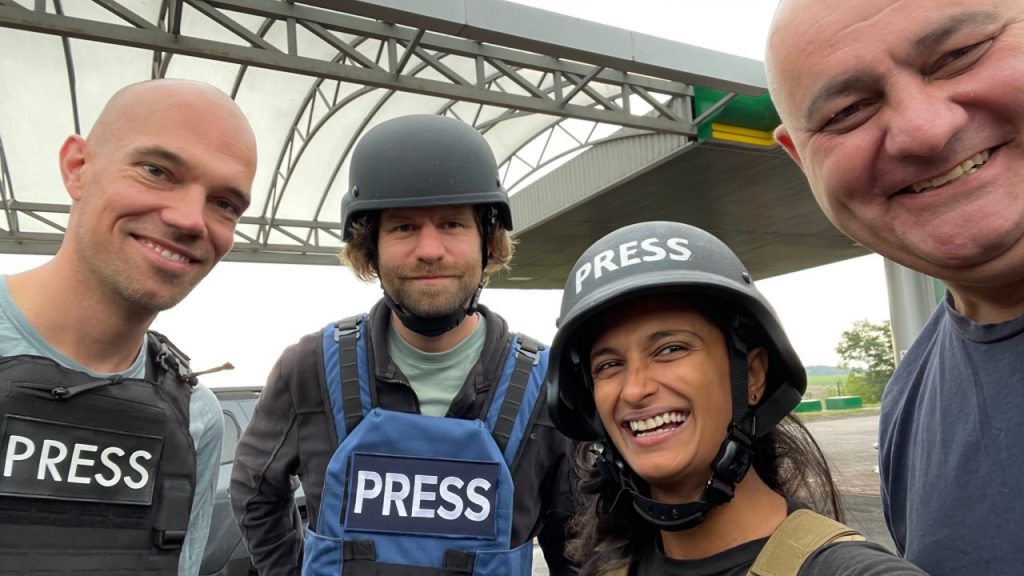


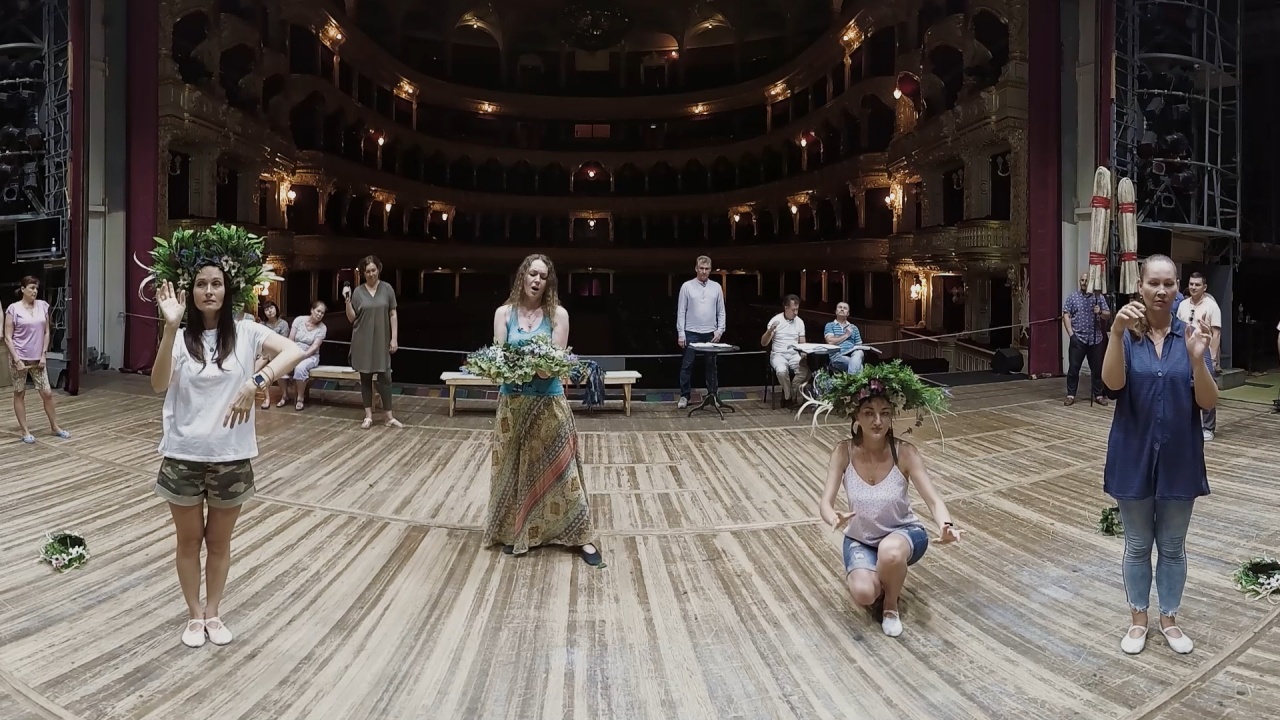

Leave a Reply
You must be logged in to post a comment.